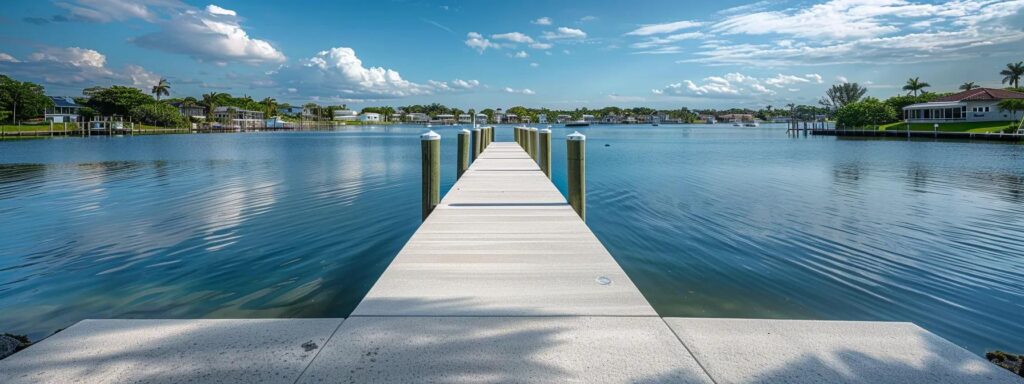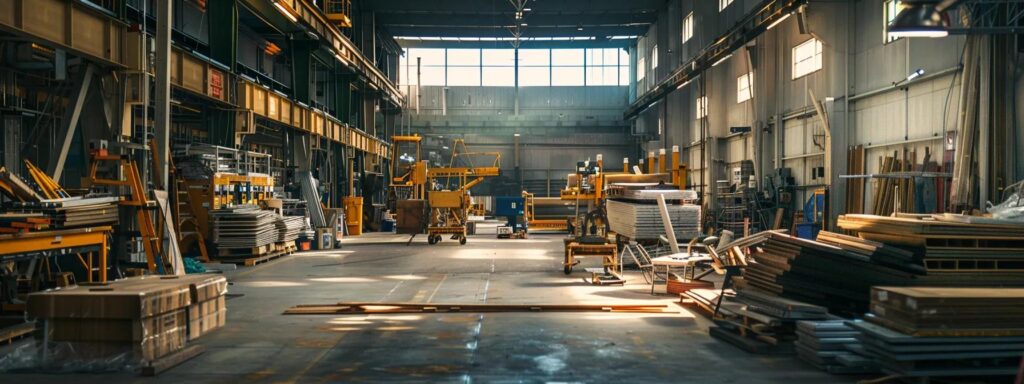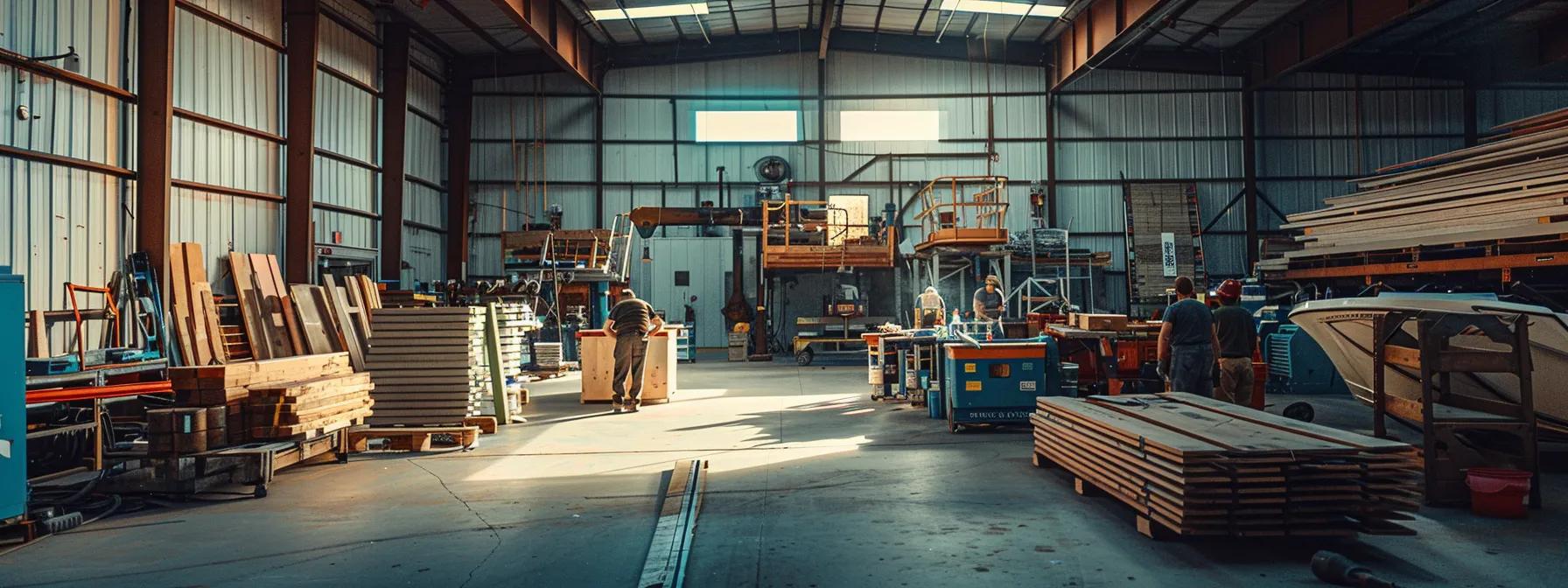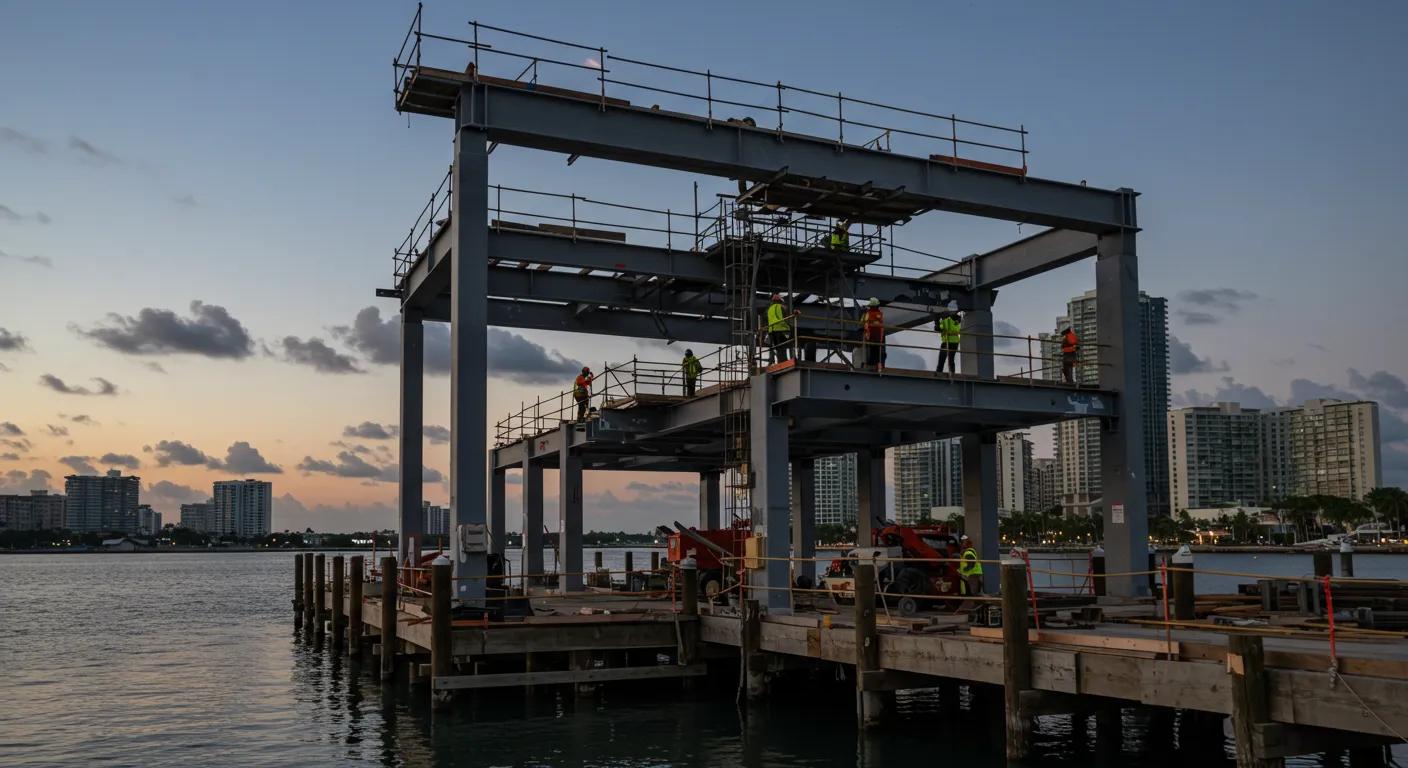Choosing the Right Materials for a Dock That Endures Harsh Local Weather
In constructing a dock in regions facing severe weather, homeowners must choose materials that can withstand conditions such as hurricane season, freezing temperatures, saltwater corrosion, and constant moisture buildup. Each decision—from the basic framework to the final accessories—should ensure longevity, safety, and reduced maintenance costs. This article helps you understand the materials available for docks exposed to harsh weather and guides you in selecting options suited to your unique climate. We explain how wood, metals, concrete, and synthetic alternatives react to saltwater, ultraviolet exposure, and temperature swings, and how proper maintenance and smart material choices lead to a durable, resilient dock that remains both functional and aesthetically appealing for decades.
Understanding the Best Materials for Harsh Weather Docks
When building a dock to endure extreme weather, it is essential to consider material durability from the outset. Ideal dock materials must offer high resistance to moisture, corrosion, and ultraviolet light while providing strength and flexibility. They must also minimize maintenance and endure environmental challenges like storm surge, wind, and temperature extremes. In this section, we identify the primary components of an ideal dock material, compare popular options, and offer insights into environmental challenges such as salt, algae growth, and UV degradation.
Identify the Key Characteristics of Durable Dock Materials
Durable dock materials exhibit high corrosion resistance, low porosity to prevent water infiltration, and strong tensile properties that absorb wind and tidal stress. Their finishes protect against ultraviolet rays and biological wear from algae and mold. For instance, pressure-treated woods are chemically modified to repel moisture and deter insects, while advanced coatings on metals and synthetics further enhance longevity. Lightweight yet robust materials also facilitate easy installation and reduce dock maintenance costs over time.
Compare Resistance Levels of Popular Dock Construction Materials
Common docking materials include treated wood, stainless steel, aluminum, and reinforced concrete. Treated wood provides a natural appearance but requires frequent resealing due to UV damage and moisture exposure. In contrast, stainless steel and aluminum boast excellent corrosion resistance and minimal upkeep. Reinforced concrete, when properly sealed, offers superior structural strength along with long-term durability, though it may require a higher initial investment.
Evaluate the Impact of Saltwater and Moisture on Materials
Saltwater and moisture are highly aggressive factors that accelerate corrosion in metals and deteriorate organic materials. Salt can promote mold and algae growth in wood while speeding up metal corrosion. Engineered materials, such as composite woods and corrosion-resistant metals with protective coatings, are specifically designed to mitigate the harmful effects of salt ions. Enhanced polymer composites, for example, combine the aesthetic appeal of wood with the resilience and low maintenance of synthetics.
Assess Lifespan and Maintenance Requirements of Various Options
Each dock material has different maintenance needs. While wood docks may require annual treatments to prevent rot and decay, metal and concrete docks generally demand less frequent upkeep but still need regular inspections after major weather events. A dock’s lifespan is closely tied to the quality of construction and proper joining techniques. Reviewing warranty details and manufacturer recommendations allows homeowners to estimate long-term costs and plan for preventive maintenance.
Consider Temperature Extremes and Their Effects on Material Choice
Temperature variations cause materials to expand and contract, leading to potential cracking, warping, or metal fatigue. Metals can suffer from thermal fatigue, and wooden components may crack when exposed to repeated cycles of freezing and searing heat. Advanced composites and high-performance polymers include additives that stabilize their structure against rapid temperature fluctuations. Choosing materials with proven thermal stability is critical for regions with pronounced seasonal changes.
Discuss How Local Climate Influences Material Selection
Local climate factors—humidity, rainfall, wind intensity, and storm frequency—directly impact dock durability. In coastal areas, docks are often exposed to strong winds and high salt levels, meaning materials must have robust tensile strength and secure fastening systems. Direct sunlight further accelerates degradation, making UV-resistant finishes and coatings essential. Consulting local experts can help tailor material selection to address specific regional challenges, ensuring long-term structural integrity and safety.
Analyzing Wood Options for Weather-Resistant Docks

Wood has long been favored for dock construction for its natural beauty and flexibility. However, not every wood type is suited for harsh weather. Knowing which wood species handle moisture, UV exposure, and temperature swings best is key to a durable dock.
Choose Ideal Species of Wood for Harsh Environmental Conditions
High-performance woods for docks include teak, cedar, and tropical hardwoods like ipe. Teak contains natural silica that combats decay and insect damage, while cedar is lightweight and resistant to warping. Selecting a wood species with a proven track record in adverse climates ensures the dock remains structurally sound over time.
Examine Treatment Options to Enhance Wood Durability
Even durable wood improves with proper treatment. Pressure-treating, staining, and sealing bolster wood’s resistance to water and decay. These treatments also extend the wood’s lifespan by delaying microbial degradation and reducing the effects of UV exposure. Regular maintenance, including reapplication of finishes, safeguards the dock from costly repairs.
Review the Pros and Cons of Composite Wood Materials
Composite wood, a blend of wood fibers and polymers, replicates the natural look of wood with significantly less maintenance. Composites resist moisture, UV rays, and rotting, though they may have a higher upfront cost and sometimes lack the warmth of traditional wood. Homeowners must weigh the long-term benefits of lower upkeep against the aesthetic appeal of natural wood.
Determine Wood Thickness Necessary for Structural Integrity
The appropriate wood thickness is critical for load-bearing capacity and resistance to bending or cracking under stress. Thicker boards offer improved support for heavy dock equipment, such as boat lifts or fenders, and counteract the effects of thermal expansion. Precise structural calculations by experienced contractors help determine the optimal dimensions.
Investigate Finishes That Protect Against Rot and Moisture
Marine-grade sealants, varnishes, and wood oils can form a protective layer that prevents water ingress and reduces UV damage. These finishes not only slow the onset of rot but also extend the interval between maintenance sessions. Choosing the right finish based on wood type and local conditions is essential for long-term preservation.
Consider the Role of Maintenance in Wood Longevity
Regular cleaning, inspections, and reapplications of protective finishes are vital to prolonging the life of wooden docks. Proactive maintenance helps catch minor issues before they lead to major structural failures. A consistent maintenance schedule, combined with high-quality wood and proper treatment, ensures reliability even in harsh weather.
Exploring Metal Materials Suitable for Docks
Metal components provide exceptional strength and durability for docks, often requiring minimal maintenance despite exposure to severe weather. They offer a modern alternative to wood with enhanced resistance against corrosive elements.
Identify Corrosion-Resistant Metals for Dock Construction
Stainless steel (especially 316 grade) and aluminum are prime choices due to their excellent corrosion resistance. Stainless steel’s molybdenum content improves its resilience against salt-induced pitting, while aluminum forms a protective oxide layer that prevents rust. These metals are ideal for fastenings, support beams, and other structural components in marine environments.
Discuss Aluminum vs. Steel for Dock Frameworks
Aluminum’s lightweight nature simplifies installation and minimizes the need for extensive support structures. However, steel—especially when galvanized or coated—offers superior strength and load-bearing capacity, making it suitable for larger docks or areas prone to storm surges. The choice between the two depends on design needs, environmental conditions, and budget considerations.
Review Finishes That Protect Metals From Harsh Weather
Protective finishes such as powder coatings, anodizing, and marine-grade paints are crucial for extending the life of metal components. These coatings shield metals from UV exposure and corrosive elements, preventing oxidation and chipping. Regular inspection of these finishes ensures continued performance and structural integrity.
Evaluate Weight Considerations for Metal Docks
The weight of metal elements affects both construction costs and the dock’s dynamic performance in extreme weather. Lighter metals like aluminum offer increased flexibility, while heavier steel components provide greater resistance to movement. Balancing weight with load-bearing capacity is essential, particularly when accommodating additional dock equipment or boat lifts.
Explore the Benefits of Galvanized Steel in Marine Environments
Galvanized steel’s zinc coating acts as a sacrificial barrier, corroding in place of the underlying steel and thereby extending its lifespan. This makes it a popular option for handrails, fasteners, and structural supports in marine settings. Reduced maintenance frequency and lower long-term costs are among its key benefits.
Analyze the Cost-Effectiveness of Metal Dock Materials
While high-grade metals may require a higher initial investment, their longevity and minimal maintenance expenses generally result in lower overall lifetime costs. A cost-benefit analysis that factors in regional weather, usage intensity, and maintenance needs can help determine the most economical and durable option.
Choosing Concrete for Durable Dock Solutions

Concrete docks offer unmatched strength and permanence. Their design flexibility and robust performance in harsh weather make them an attractive option for homeowners prioritizing durability over visual aesthetics.
Understand the Benefits of Concrete Dock Materials
Concrete provides stability and long-term strength, resisting tidal forces, thermal expansion, and physical impacts. Its low maintenance requirements and predictable performance over decades make it a reliable choice for many dock applications.
Analyze Different Types of Concrete Suitable for Water Exposure
Specialized marine-grade concretes—often reinforced with additives or fibers—are designed to withstand chlorides, salt, and freeze-thaw cycles. These formulations prevent micro-cracking and protect internal reinforcements from corrosion, ensuring structural integrity in water-exposed environments.
Discuss Reinforcing Techniques to Enhance Concrete Strength
Rebars, wire mesh, and post-tensioning are common reinforcement techniques that distribute stresses evenly and prevent cracking. Such methods are particularly important in areas subject to heavy loads or frequent temperature fluctuations, ensuring the dock can handle both everyday use and extreme weather events.
Review Finishing Options to Provide Slip Resistance
Surface treatments like anti-slip coatings, textured aggregates, or acid etching enhance both safety and durability by preventing water ingress and reducing slip hazards. Routine maintenance of these finishes keeps the dock’s surface safe and attractive over time.
Evaluate the Cost Implications of Concrete Versus Other Materials
Though concrete docks have a high initial cost, their longevity and minimal upkeep often lead to lower lifecycle expenses compared to wood or metals. Detailed financial planning can reveal that the upfront investment is offset by decades of reliable use and predictable maintenance costs.
Consider Ease of Maintenance for Concrete Docks
Concrete requires relatively minimal maintenance—periodic inspections for cracks, resealing of surfaces, and occasional pressure washing are usually sufficient. Its inherent durability makes it a cost-effective solution for homeowners who prefer low long-term upkeep.
Assessing Synthetic Materials for Weather Resilience
Synthetic materials such as PVC and HDPE have gained popularity because they combine versatility, low maintenance, and high resistance to environmental degradation—all while maintaining a modern aesthetic.
Explore the Advantages of Using PVC and HDPE for Docks
PVC and HDPE are highly resistant to water absorption, chemical damage, and UV degradation. Their non-porous surfaces discourage mold and algae growth, making them ideal for high-moisture environments. Additionally, their modular design allows for easy installation and customization, reducing both labor costs and repair times.
Examine the Environmental Impact of Synthetic Materials
Although these materials are petroleum-based, manufacturers are increasingly adopting recycling initiatives and eco-friendly practices. Many synthetic dock systems now incorporate recycled content and are designed for recyclability, balancing performance with environmental responsibility.
Compare Durability and Lifespan of Synthetic Versus Natural Materials
Synthetic docks generally offer a longer lifespan and require less frequent maintenance compared to wood. They resist the wear and tear from moisture, UV radiation, and saltwater exposure far better than untreated natural materials, making them an attractive option for long-term durability in extreme weather.
Identify Applications Where Synthetic Options Excel
Synthetics are particularly effective in situations requiring high resistance to biological fouling, debris accumulation, and wear. Their durability in saltwater environments and ability to absorb dynamic forces from storm surges make them ideal for busy marinas and residential docks alike.
Discuss Installation Challenges and Solutions for Synthetic Docks
Although synthetic docks are modular and easy to install, ensuring that modules lock securely and are properly anchored can be challenging. Manufacturers provide specialized fasteners and interlocking systems to distribute stress evenly, and experienced installers are recommended to guarantee optimal performance.
Review Color and Design Flexibility in Synthetic Materials
One major advantage of synthetic materials is their consistent color and design flexibility. They can be manufactured in a wide range of hues and textures that mimic natural wood or other materials, offering homeowners a modern, low-maintenance dock solution that can be tailored to personal style.
Selecting Accessories and Features to Enhance Dock Durability

Beyond primary construction materials, the proper selection of accessories and design features dramatically influences overall dock performance and longevity. These components not only improve functionality and safety but also protect the main structure from environmental damage.
Explore the Importance of Proper Dock Anchoring Systems
A secure anchoring system is fundamental for keeping the dock stable during high winds, storm surges, and turbulent waters. Quality anchors, chains, and pilings ensure that the dock remains fixed to the seabed and distributes loads evenly, reducing structural stress and enhancing overall durability.
Assess How Fenders and Bumpers Protect Dock Structures
Fenders and bumpers absorb impact energy between watercraft and the dock, preventing costly damage from collisions or abrasion. Made from weather-resistant materials, these accessories help extend the life of docking surfaces, especially in busy marinas or areas with frequent boat activity.
Review Seals and Barriers That Prevent Water Infiltration
Effective sealing is critical to block water from entering joints and connections, which can otherwise lead to corrosion, decay, and structural failure. High-quality gaskets and waterproof membranes protect indoor components and reduce repair costs, ensuring long-term integrity.
Discuss the Role of Lighting in Preventing Accidents
Proper lighting, especially using durable LED systems, enhances dock safety by improving visibility during low-light conditions and clearly marking walkways. In addition, well-designed lighting adds to the dock’s aesthetic appeal and functionality, making it easier to navigate in adverse weather.
Analyze the Benefits of Incorporating Flexible Design Elements
Design features like modular structures, adjustable components, and expansion gaps allow a dock to adapt to changing water levels and absorb energy during storms. These flexible elements reduce stress on the overall structure and simplify repairs, ultimately extending the dock’s lifespan and lowering maintenance costs.
Evaluate How Accessories Can Impact Overall Dock Performance
Carefully chosen accessories—ranging from corrosion-resistant cleats to weatherproof railing systems—work in tandem with primary materials to ensure a dock that withstands extreme weather conditions. These components complement the core structure and contribute significantly to safety, durability, and overall performance.
Final Thoughts
This overview demonstrates that building a dock to endure harsh local weather demands careful selection of every component—from primary construction materials to the smallest accessory. By understanding the benefits, limitations, and maintenance requirements of wood, metal, concrete, and synthetic materials, homeowners can make informed decisions that protect their investment. Emphasizing both structural integrity and practical design ensures that your dock will remain safe, functional, and aesthetically pleasing for decades to come.
Frequently Asked Questions
Q: What factors should be considered when choosing materials for a dock in harsh weather? A: Consider resistance to moisture, corrosion, temperature fluctuations, and UV exposure. Evaluating the lifespan, maintenance requirements, and local climate impact helps ensure you choose the most durable option.
Q: How do treated woods compare to composite materials in dock construction? A: Treated woods offer a natural look but require regular maintenance to prevent rot and degradation. Composite materials, though costlier initially, provide superior longevity and lower upkeep, making them well-suited to severe weather.
Q: What advantages do corrosion-resistant metals offer for dock frameworks? A: Metals such as stainless steel and aluminum excel in resisting saltwater and moisture-induced corrosion. They deliver robust strength with minimal maintenance, and additional protective coatings can further extend their lifespan.
Q: Why is proper sealing important in dock construction? A: Seals and barriers prevent water infiltration that can lead to internal corrosion, rot, and structural failure. By maintaining these seals, you preserve the dock’s overall integrity and avoid costly repairs.
Q: Can synthetic materials like PVC and HDPE really withstand harsh marine environments? A: Yes, synthetic materials like PVC and HDPE are engineered to resist moisture, UV radiation, and biological fouling. Their low-maintenance nature and durability make them ideal for docks exposed to extreme weather.
Q: How does proper dock anchoring improve durability during storms? A: A robust anchoring system keeps the dock securely fixed, distributing stresses evenly and reducing the risk of failure during high winds and storm surges. Regular inspections further enhance safety and longevity.
Q: What role does lighting play in enhancing dock safety? A: Adequate lighting improves visibility during low-light conditions and helps prevent accidents. LED systems, designed to withstand severe weather, also contribute to the dock’s overall functionality and aesthetic appeal.



